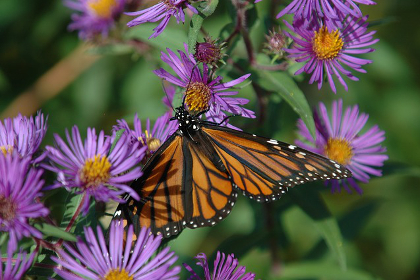
Monarch Butterfly Numbers Drop by 27 Percent in Mexico
The number of monarch butterflies wintering in Mexico dropped by 27 percent this year, reversing last year's recovery from historically low numbers, according to a study by government and independent experts released Thursday.
February 9, 2017 | Source: Associated Press | by Mark Stevenson
MEXICO CITY — The number of monarch butterflies wintering in Mexico dropped by 27 percent this year, reversing last year's recovery from historically low numbers, according to a study by government and independent experts released Thursday.
The experts say the decline could be due to late winter storms last year that blew down more than 100 acres (40 hectares) of forests where migrating monarch butterflies spend the winter in central Mexico.
Millions of monarchs make the 3,400-mile (5,500-kilometer) migration from the United States and Canada each year, and they cluster tightly in the pine and fir forests west of Mexico City. They are counted not by individuals, but by the area they cover.
"The reduction in the area of forest they occupied this year is most probably due to the high mortality caused by storms and cold weather last year," said Omar Vidal, the head of the Mexico office of the World Wildlife Fund. "It is a clear reminder for the three countries that they must step up actions to protect breeding, feeding and migratory habitat."
Officials estimate the storms in March killed about 6.2 million butterflies, almost 7.4 percent of the estimated 84 million that wintered in Mexico, said Alejandro Del Mazo, Mexico's commissioner for protected areas. The monarchs were preparing to fly back to the U.S. and Canada at the time the storm hit.
While no butterfly lives to make the round trip, a reduction in the number making it out of the wintering grounds often results in a decline among those who return the next year.
The combination of rain, cold and high winds from the storms caused the loss of 133 acres (54 hectares) of pine and fir trees in the mountaintop wintering grounds, more than four times the amount lost to illegal logging. It was the biggest storm-related loss since the winter of 2009-10, when unusually heavy rainstorms and mudslides caused the destruction of 262 acres (106 hectares) of trees.
